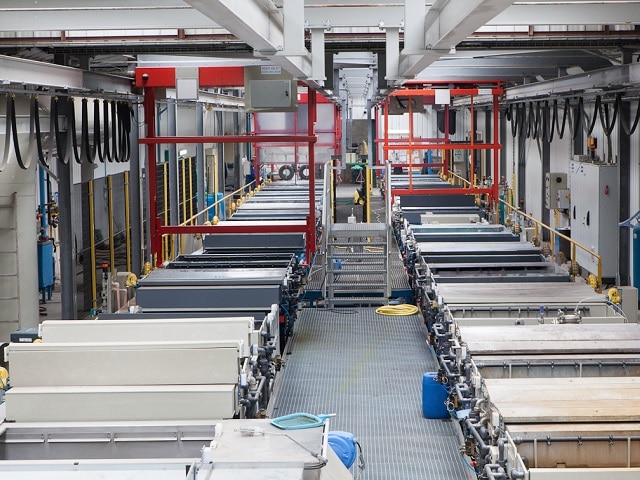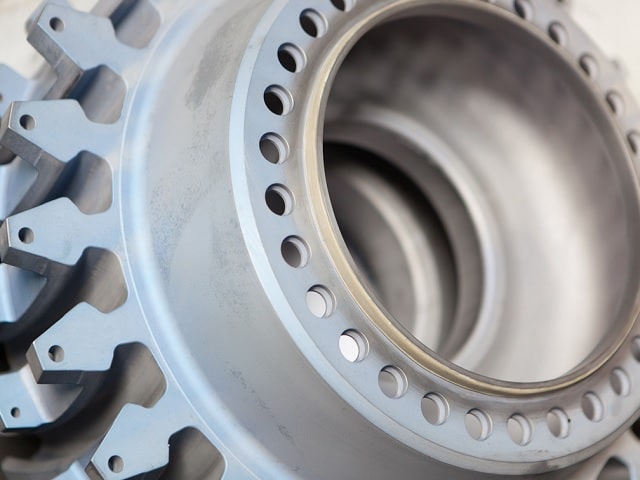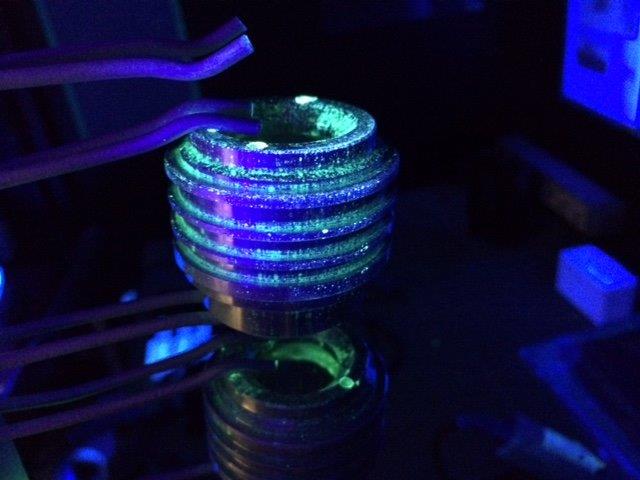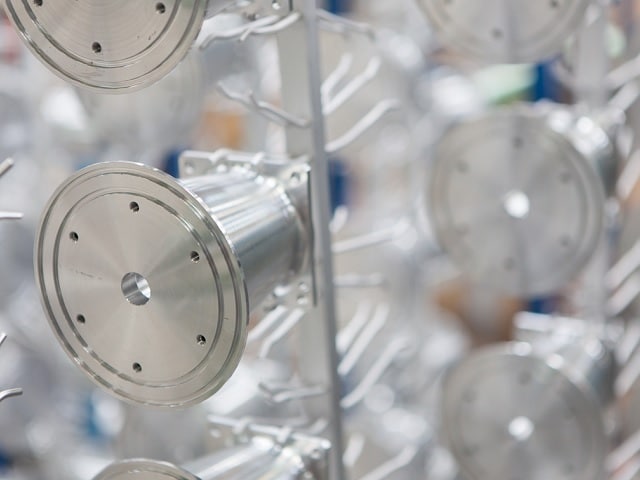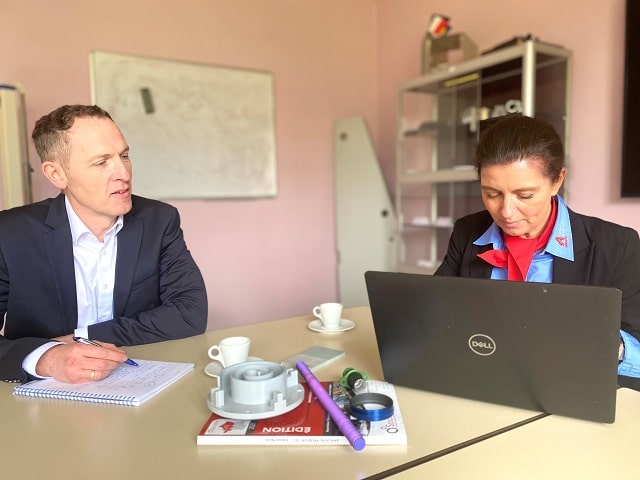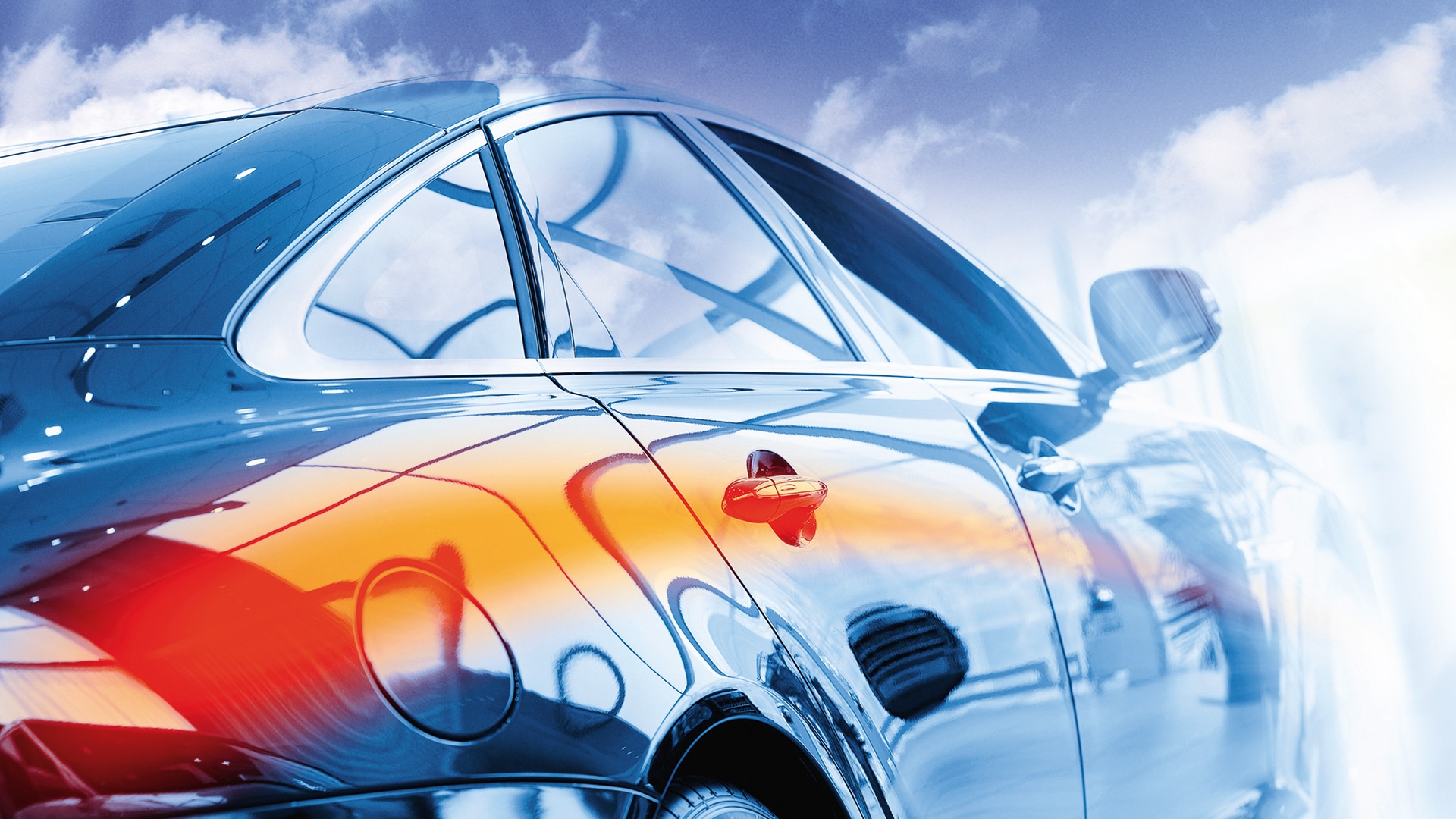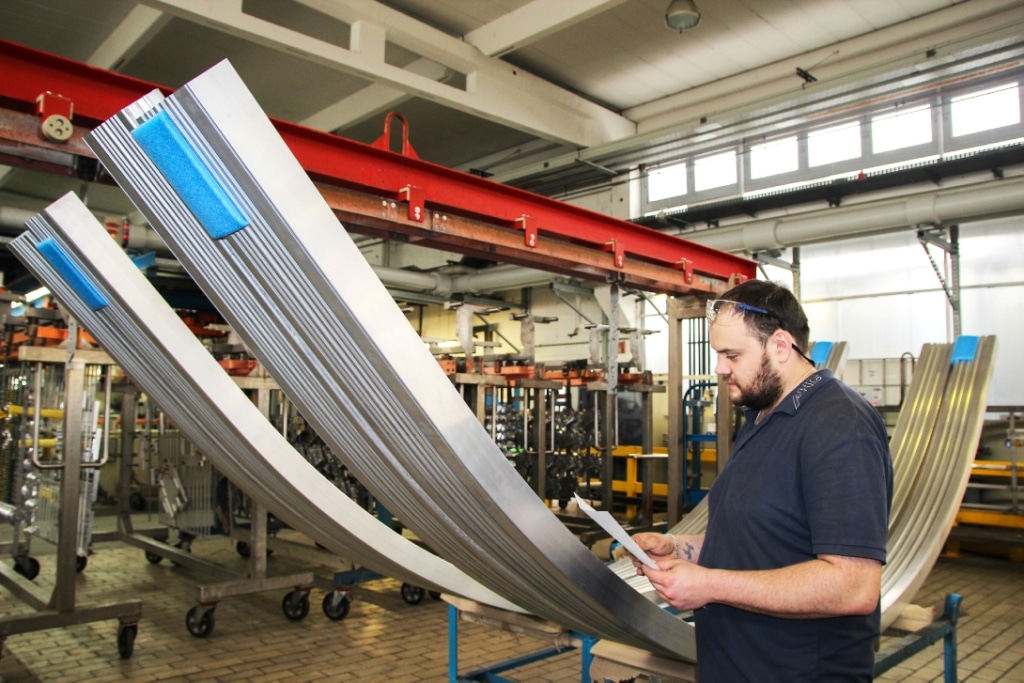surface treatment
Aalberts surface technologies Villers-Cotterêts
about this location
Aalberts surface technologies Villers-Cotterêts is your specialist for anti-corrosion and anti-wear surface treatment in France.
welcome to Villers-Cotterêts !
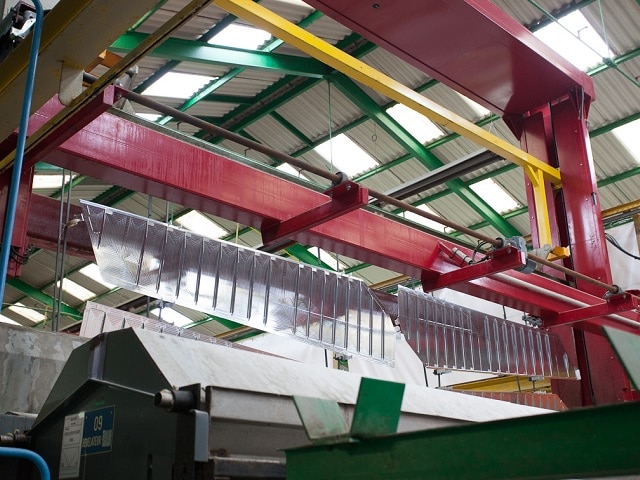
The company was founded in 1952 and joined Aalberts in 2005. We are adopting the name in 2021 according to the will of having one name for all entities belonging to Aalberts.
Bringing service to the aerospace, defence and space sectors, we are the reference for all surface treatment on aluminum and titanium alloys.
On the Villers-Cotterêts site we offer you the following services:
- Treatments by electrolytic conversion (CAA – TSA – SAA – Hard anodizing – SAA titanium)
- Chemical conversion treatments (Alodine – Surtec 650 – Conversion coating on titanium alloys)
- Non-destructive testing (Fluorescent dye penetrant testing – Blue etch – Chromic dye penetrant testing)
- Paint, varnish and colouring (Solvent and water-based – Molykote – E coating)
Our site can accommodate small parts but also large parts, up to 5.5m.
The result on the Aalberts surface technologies Villers-Cotterêts gender equality index is 91% for 2025 using data from 2024.
quality at the service of the most demanding clients
The Villers-Cotterêts site has obtained ISO 9001, EN 9100, ISO 14001, and NADCAP certifications.
This has enabled us to gain the trust and qualifications from largest clients such as DASSAULT-THALES-SAFRAN-AIRBUS- NEXTER-MBDA-COLLINS- RATIER FIGEAC.
towards environmentally friendly treatments
In Villers-Cotterêts, our team has put efforts and investment to reduce impact on environment and has implemented alternative solutions to get rid of treatments using Chrome VI.
E-Coating, allows in a single step to combine an anodic undercoat and a paint film with a controlled and thinner thickness and a shorter cycle time. The paint application is similar to a spray application with better performance (anti-corrosion and adhesion). It is possible to produce parts of any geometry, on titanium or aluminum alloys. Problems with grains or drips cannot occur as it is an anodized application. Combination with post or pre-treatment can be also performed.
We are also gradually replacing CAA by TSA, developed by AIRBUS, to comply with REACH legislation and the removal of chromium VI. This process can be applied to all grades of aluminum alloys and provides good paint adhesion. The combination of the two (TSA + paint) gives a very good corrosion resistance. This anodization forms a thin layer of 2 to 7 µm.
We are also able to offer a REACH substitute for Alodine 1200 (chemical conversion). Surtec 650, a process that ensures the same properties: good adhesion, a paint bonding base, good anti-corrosion protection and electrical continuity.
from innovation to quality
We see ourselves as far more than applicators, it is our aim to be innovators. Patents are developed and registered.
To continuously improve our internal performance, we work in cooperation with our customers and other entities from Aalberts as part of development programs.
Our research is developed in our laboratories or in our production workshop.
Past and current developments and patents:
- BF5 chromic anodizing (own property)
- Optimized sealing (jointly owned by DASSAULT and Villers-Cotterêts)
- Molybdate sealing (own property)
- DURKALU hard anodizing (own property)
- E-coating (developed by PPG in cooperation with Villers-Cotterêts)
mechanical stripping (mechanical preparation of surfaces)
Our main processes used are:
- Preparation of surfaces by dry sand blasting (corundum)
- Paint stripping by plastic medium
Substrates concerned:
- Mainly steel, aluminum alloys and titanium alloys
wet shot peening
Controlled shot peening is a sensitive technique, based on the structural transformation of materials.
The process consists of putting mechanical parts under superficial compression by the projection of small steel, glass or ceramic beads. Applied on the entire surface to be treated or only on certain areas, this microbead blasting operation creates a compressed area which increases the surface hardness of the parts concerned and decreases their deterioration due to fatigue.
Applications:
- Structural parts made of aluminum or titanium alloy
- Treatment carried out before anodizing for aluminum alloys
paint (oil-based, water-based and bonding primer)
MoS2: Molykote type deposit
S2, S3 and S4 fluorescent dye penetrant
chromic dye penetrant test
Chromic dye penetrant is a non-destructive test applicable to aluminium alloys.
Faults detected:
- Machining faults
- Heat treatment faults
- Forging faults
- Welding faults
- Skin faults (cracking, pitting, etc.), faults shown up by chromic dye penetrant test
blue etch (titanium alloy)
The purpose of the process is to highlight the structure and detect visible indications on the surface such as:
- Chemical segregations, α, β and silicides
- Inclusions, porosity
- Cracking, forge folds and folds
- Areas of overheating and areas of localised under-heating
- Incrustation, inclusions and heterogeneities
- Shearing, separation and cold working
- Areas of localised α-case contamination and oxide skins
- Local overheating caused by polishing or burning caused by machining
- Sudden change in fibre, grain size or grain not recrystallized
- And any other that is detectable by this inspection process (machining or handling faults)
FPC: fluoro-phosphate conversion (titanium)
Fluoro-phosphate conversion is a chemical conversion process applicable to titanium alloys and producing a complex film of phosphate and fluoride. The purpose of this chemical conversion is to confer on the treated part a decrease in its friction coefficient and to prevent seizing:
- Appearance: depending on the alloy, the colour is more or less dark, ranging from metallic grey to more amber colours
- Thickness: < 1 µm
- Surface condition: slight degradation of the roughness
- Coefficient of friction: depends on the load applied – the higher the load, the lower the coefficient, in the order of 0.1 under 1 N (opposing Titanium T40)
- Applications: Nuts and bolts, fastenings, unions, etc.
alodine 1200 chemical conversion
Alodine 1200 is an exclusively chemical, simple, economic and effective process, for long-term protection against oxidation of the surfaces of aluminium or light alloys.
Alodine 1200 treatment was developed for the protection of surfaces that are intended not to receive, or only to receive locally, a paint finish (salt spray >168h), but it is also a perfect preparation before painting.
It ensures maximum adhesion and excellent holding over time of the finishes applied, due to the perfect chemical stability conferred on the treated surfaces.
Alodine 1200, used with heat treatment, forms a protective coating on aluminium or alloys virtually without an increase in thickness. The colouration of this coating varies from yellow to brown depending on the type of alloy or the degree of purity of the metal. Alodine 1200 is certified according to the MIL C 5541 standard.
CAO: Chromic anodic oxidation
The BF5 process is covered by a patent and a trademark registered by SGI; it is a chromic anodizing process which is characterized by its simplicity and reliability of use.
Electrolytic conversion treatment is applicable on aluminium alloys. Its characteristics are as follows:
- It forms a low thickness oxide film (2 to 7 μm), useful in the case of parts with tolerances, which has the advantage of being flexible and presenting better slip properties than oxide layers performed in a sulphuric medium.
- Chromic acid does not attack the aluminium nor the alumina; this eliminates any danger in the event of retention on moulded parts or assemblies.
- The oxide layer reproduces the structure of the metal and in so doing the history of the part. Hence it can be used to establish a check on material soundness..
- It provides high corrosion resistance (750 hours in neutral salt spray, ISO 9227).
- It enables good adhesion of paint systems.
These chromic anodizing lines satisfy aeronautical specifications perfectly and are certified by most customers: AIRBUS France, Alenia, Boeing helicopters, British Aerospace, CASA, Dassault Aviation, Dornier, Fabrique Federale d’Emmen, Gamesa, SAAB, SABCA, SNECMA, SONACA, Pratt & Whitney (Canada), etc.
BF5 chromic anodizing is used for primary parts constituting aircraft fuselages and in precision engineering. It is also useful as temporary protection and receipt inspection of plate intended for the aeronautical industry. Finally, it can create savings in the event of subsequent hard anodizing.
SAO: Sulphuric anodic oxidation
This is generally implemented in a bath containing 150 to 250 g/l of sulphuric acid, at a temperature between 16 and 24°C, at a current density of 1.2 to 1.8 A/dm2.
The duration of this treatment is 20 to 60 min, the thickness of the oxide film obtained depends on the chemical composition of the alloy and varies according to the application sought and the industrial sector concerned. It is usually 5 to 25 µm. The treatment leads to a swelling equivalent to 33% of the thickness of the film and a slight increase in the surface roughness. The oxide layer is mainly composed of a porous structure. Sealing treatment by hydration of the porous layer is necessary to achieve the maximum corrosion resistance, but paint adhesion decreases significantly. It is possible to colour the coating, a bright metallic colour is obtained by chemical colouration: black, red, blue or green.
Electrolytic colouring, by the deposit of a mixture of oxides and metals, produces shades of gold, bronze and black that are very solid under light. The colouring operation is located before the sealing.
SAO(ti): Sulphuric anodic oxidation (titanium)
Compared with chromic, sulphuric and hard anodizing carried out on aluminium alloy, the structure of the film obtained on titanium by sulphuric anodizing is different. In this latter case, it is a barrier type film, i.e., thin, compact, and non-porous.
In most cases, this treatment is carried out on pure titanium, T40 or T60, or on titanium alloy, TA6V, TA5Zr, TU2, etc.
Unlike in the case of lightweight alloys, to the extent that there is no “porous part” over the “barrier part” neither the sealing nor is the colouring operations are performed.
Hence, the treatment is generally confined to an alkaline degreasing operation (degreasing in chlorinated solvent is generally avoided in order not to risk weakening the titanium by inclusion of hydrogen), a stripping operation in a fluo-nitric bath and the anodizing itself.
After the anodizing process a further treatment will often be applied. It could be paint or a dry lubricant such as MoS2 or PTFE based varnish. It should be noted that titanium surfaces treated by anodizing are very sensitive to handling and stain easily.
Anodizing allows us to obtain oxide films of controlled thickness, and the colour is the result of the optical interference of white light.
The optical interference effect comes from the fact that the incident light is partly reflected, and partly transmitted and refracted in the oxide film. The light reaching the metal / oxide interface is again partly absorbed, but mostly reflected in the oxide film. Several reflections may take place, during which it dephasing occurs. The beam that finally emerges provides optical interference resulting in a light of reduced wavelength; in other words, coloured light reaching the eye.
The thickness of the anodic film depends on the voltage applied and, as the colour depends on the thickness of the film, this colour can be controlled by the anodizing voltage. The following table shows the relation between the formation voltage and the colour of the anodic films obtained in a sulphuric medium.
In most cases, anodizing is conducted in such a way as to obtain a blue tinted film. However, there are exceptions for decorative films (jewellery, eyewear, etc.) or technical films which are thick and of different colours.
STA: Sulpho-tartaric anodic oxidation
Sulpho-tartaric anodic oxidation is the emanation of an Alenia patent improved by Airbus. The aim is to replace chromic anodic oxidation, (CAO).
It is generally performed in a bath containing about 40 g/l of sulphuric acid and 80g/l of tartaric acid, at a temperature of 35 to 40°C. The constant voltage is 14/15V. The cycles of approximately 25 minutes include a voltage rise of 5 minutes and then a steady state of 20 to 25 minutes. The sulpho-tartaric anodizing forms very thin layers, 2 to 7 µm (thicknesses similar to those formed during a CAO). It creates good corrosion resistance thanks to the adhesion of the paint films; painting is performed on an unsealed layer. Its influence on the fatigue characteristics is moderate (reduction in the order of 20 to 30% compared to the bare substrate, like that induced by a CAO).
In the case of unpainted parts requiring high corrosion resistance the anodizing cycle is extended to approximately 15 minutes (long cycle STA) to obtain a thickness of 5 to 7 µm and then sealing is done in 2 steps, the first consisting of impregnation with a trivalent chromium based solution followed by hydrothermal sealing in water at 98°C.
Via the deletion of the chromium hexavalent, which is toxic and carcinogenic, this process complies with the REACH Regulation.
Anaphoresis
The process implemented is electro-depositing of paint and consists of submerging the workpiece in a bath of water-based electrically conducting paint.
A potential difference is applied between the part and a counter-electrode by connecting the part to the positive pole (anode, hence the name anaphoresis) and the counter-electrode to the negative pole (cathode). The resulting effect is accompanied by the migration of particles of paint in suspension from the cathode to the anode. These are then deposited uniformly on practically the whole area of the part immersed. The operation only lasts for a few minutes in a continuously stirred bath. The paint is then drained off and polymerized in an oven at a temperature below 120°C.
Considering the significant thicknesses of the oxides formed in hard anodizing, it may be necessary to consider variations in the dimensions of parts. It is sometimes necessary to grind the coating after anodizing to restore the surface condition.
The paint used is mainly composed of water (80%) and contains less than 5% of organic solvents. Consequently, the presence of an ATEX area is not necessary. The process used does not contain heavy metals or chlorinated solvents and its VOC level is limited.
Substrates
All conductive materials (titanium alloys, aluminium, Inconel, stainless steel, etc.) and for all modes of transformation.
our treatment capacities
Non-Destructive Testing
| S2, S3 and S4 fluorescent dye penetrant | 5,500 x 0,600 x1,900 meters |
| Chromic dye penetrant test | 5,500 x 0,600 x1,900 meters |
| Blue etch (Titanium Alloy) | 1,700 x 1,000 x 1,700 meters |
Treatment by electrolytic conversion
| CAO: Chromic anodic oxidation | 5,500 x 0,600 x1,900 meters |
| STA: Sulpho-tartaric anodic oxidation | 5,500 x 0,600 x 1,900 meters |
| SAO: Sulphuric anodic oxidation | 5,500 x 0,600 x1,900 meters |
| HAO: Hard anodic oxidation | 5,500 x 0,600 x1,900 meters |
| SAO(ti): Sulphuric anodic oxidation (titanium) | 0,700 x 0,800 x 0,600 meters |
| Anaphoresis | 1,500 x 0,600 x 1,000 meters |
Chemical conversion treatment
| FPC: fluoro-phosphate conversion (titanium) | 0,700 x 0,800 x 0,600 meters |
| Alodine 1200 chemical conversion | 0,700 x 0,800 x 0,600 meters |
| Surtec 650 | 1,000 x 0,700 x 0,700 meters |
Paint, varnish and colouration
| Paint (oil-based, water-based and bonding primer) | 5,500 x 1,000 x 1,900 meters |
| MoS2: Molykote type deposit | 1,000 x 0,700 x 0,700 meters |
| Anaphoresis | 1,500 x 0,600 x 1,000 meters |
